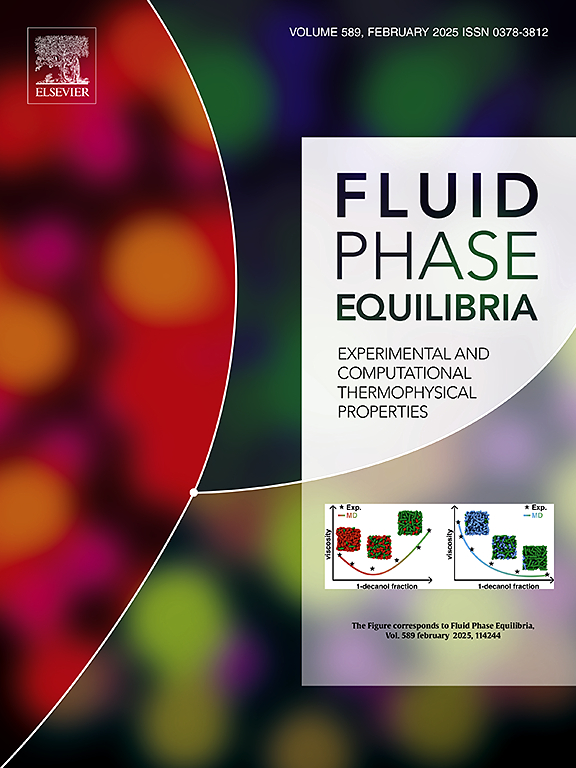Graph neural networks embedded into Margules model for vapor–liquid equilibria prediction
IF 2.7
3区 工程技术
Q3 CHEMISTRY, PHYSICAL
引用次数: 0
Abstract
Predictive thermodynamic models are crucial for the early stages of product and process design. In this paper the performance of Graph Neural Networks (GNNs) embedded into a relatively simple excess Gibbs energy model, the extended Margules model, for predicting vapor–liquid equilibrium at low pressures (less than 5 bar) is analyzed. By comparing its performance against the established UNIFAC-Dortmund model it has been shown that GNNs embedded in Margules achieves an overall lower accuracy. However, higher accuracy is observed in the case of various types of binary mixtures. Moreover, since group contribution methods, like UNIFAC, are limited due to feasibility of molecular fragmentation or availability of parameters, the GNN in Margules model offers an alternative for VLE estimation. The findings establish a baseline for the predictive accuracy that simple excess Gibbs energy models combined with GNNs trained solely on infinite dilution data can achieve.

将神经网络嵌入marules模型,用于汽液平衡预测
预测热力学模型对于产品和工艺设计的早期阶段至关重要。本文分析了嵌入相对简单的超额吉布斯能量模型(扩展Margules模型)的图神经网络(GNNs)在低压(小于5 bar)下预测汽液平衡的性能。通过将其性能与已建立的UNIFAC-Dortmund模型进行比较,表明嵌入在Margules中的gnn总体上达到了较低的精度。然而,在各种类型的二元混合物的情况下,观察到更高的精度。此外,由于像UNIFAC这样的群体贡献方法由于分子碎片化的可行性或参数的可用性而受到限制,Margules模型中的GNN为VLE估计提供了另一种选择。这些发现为简单的超额吉布斯能量模型与仅在无限稀释数据上训练的gnn相结合可以实现的预测准确性建立了基线。
本文章由计算机程序翻译,如有差异,请以英文原文为准。
求助全文
约1分钟内获得全文
求助全文
来源期刊

Fluid Phase Equilibria
工程技术-工程:化工
CiteScore
5.30
自引率
15.40%
发文量
223
审稿时长
53 days
期刊介绍:
Fluid Phase Equilibria publishes high-quality papers dealing with experimental, theoretical, and applied research related to equilibrium and transport properties of fluids, solids, and interfaces. Subjects of interest include physical/phase and chemical equilibria; equilibrium and nonequilibrium thermophysical properties; fundamental thermodynamic relations; and stability. The systems central to the journal include pure substances and mixtures of organic and inorganic materials, including polymers, biochemicals, and surfactants with sufficient characterization of composition and purity for the results to be reproduced. Alloys are of interest only when thermodynamic studies are included, purely material studies will not be considered. In all cases, authors are expected to provide physical or chemical interpretations of the results.
Experimental research can include measurements under all conditions of temperature, pressure, and composition, including critical and supercritical. Measurements are to be associated with systems and conditions of fundamental or applied interest, and may not be only a collection of routine data, such as physical property or solubility measurements at limited pressures and temperatures close to ambient, or surfactant studies focussed strictly on micellisation or micelle structure. Papers reporting common data must be accompanied by new physical insights and/or contemporary or new theory or techniques.
 求助内容:
求助内容: 应助结果提醒方式:
应助结果提醒方式:


